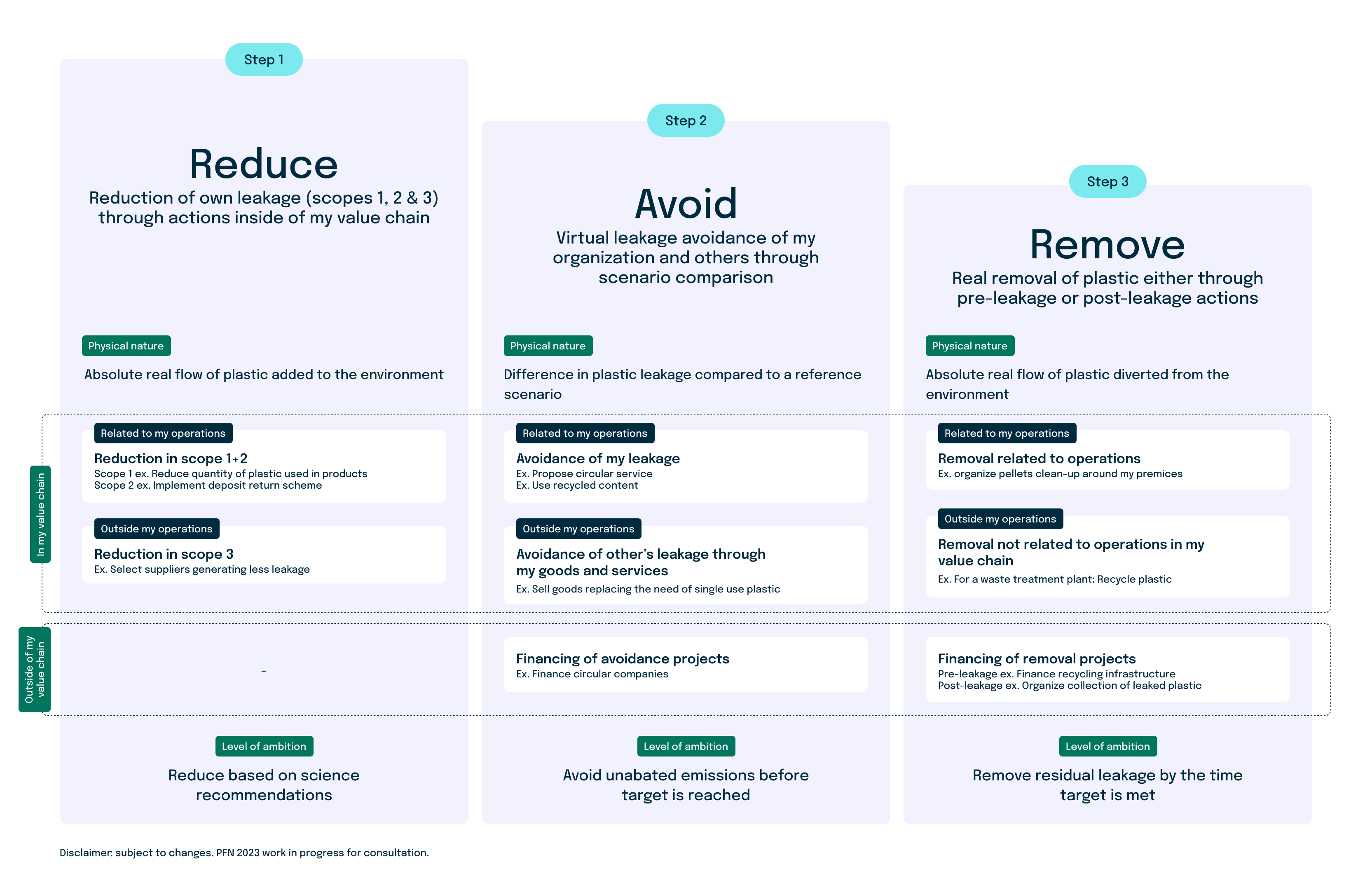At the Plastic Footprint Network, we’re working toward a vision of a corporate plastic accountability framework that supports both voluntary leadership and regulatory alignment, including with the future UN Treaty on Plastic Pollution.
Co-creating a vision: building blocks for developing plastic pollution target setting aligned to the UN Treaty on Plastic Pollution and mitigation actions led by best-in-class science.
The PFN proposes that the Corporate Accountability Framework under development includes three steps: Reduce, Avoid, and Manage. The steps underpin the Plastic Footprint Networks ongoing focus and efforts around the creation of an effective Plastics Treaty.
While ideal metrics may not exist for all areas of protection, the framework encourages corporate actors to set targets based on existing science, with alignment to the coming UN Treaty goals.
To complete the Corporate Accountability Framework under development, the PFN is developing methodologies for translation, sector-specific reduction pathways, and additionality methodologies, with input from multiple stakeholders.

The Plastic Action Framework (PAF) categorises corporate mitigation actions — but it does not yet define how much plastic must be reduced per pillar or per company.
PFN is now working with key organizations to co-develop guidance on:
This work draws inspiration from approaches like the Net Zero Initiative, where action types (e.g., reduction vs. compensation) are treated distinctly but collectively contribute to a company’s overall impact.
Setting reduction targets per intervention type is the logical next step to help companies:
This work will be prioritized in PFN’s 2025-2026 agenda and developed in close collaboration with PFN members and partners.
Organizations interested in adding their voice to development of the target setting framework and/or demonstrating leadership as pilot users of the framework, are encouraged to get in touch.
All individuals and organizations that are committed to using robust science and collaboration to create solutions to the plastic pollution crisis are invited to join the Plastic Footprint Network.
The Plastic Footprint Network is convened by EA – Earth Action